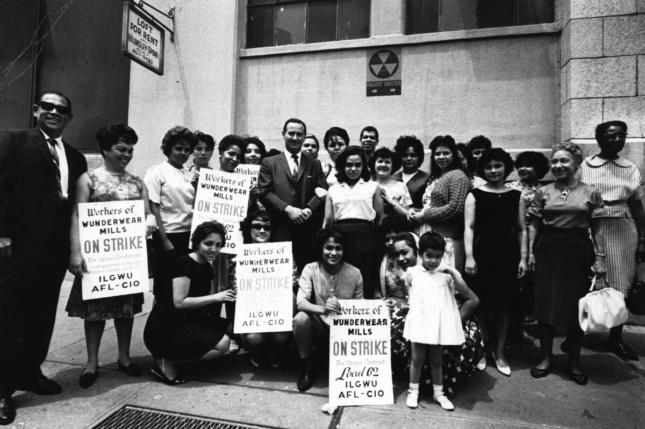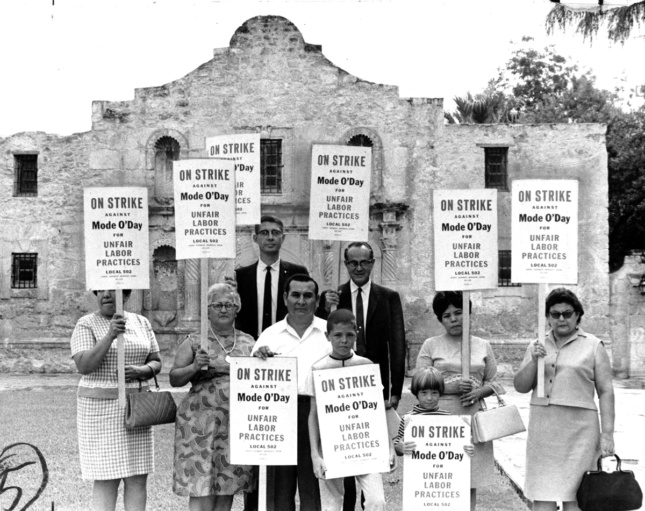In late August 2019, the AIA’s New York chapter hosted a panel moderated by architecture activist group The Architecture Lobby at the Center for Architecture called Firm Handbook and Best Practices for Office Policies. After all the panelists finished listing their offices’ progressive policies, including flexible work hours and codes of conduct, an audience member (in a crowd notably stacked with Lobby members, myself included) asked a question about unions and collective bargaining. The associate director of human resources of Kohn Pedersen Fox Associates responded: “Is this a case of wanting a union because the people suggesting it feel like the employer is the jerk and has to be controlled? Or, are you just saying you want to be able to give feedback and be heard and help influence the culture of the firm? Those are two very different things. If the general industry is really that bad and needs to be regulated by something like a union, then we all have a problem.”
This statement is ripe for analysis that could keep us here for days, but let’s keep to a few key points. First, what is a union? By our HR professional’s estimation, it is a mechanism for controlling jerks in power. More accurately, however, a union is a twofold agreement. The first part of the agreement is between all the workers of a company or sector to elect representatives to negotiate their interests with the managers and owners of that company or sector. This is collective bargaining, to which everyone has the right under U.S. law. The second agreement is between workers and management that the union will be recognized, have a seat at the table, and be able to negotiate the terms of their employment. Within the scaffolding of this structure, a union can look like and achieve whatever it can agree on collectively, which—and hopefully to our HR professional’s delight—includes giving feedback and influencing company culture.
Now, does the desire for unionization indicate an industry-wide crisis? Yes, it does, but this crisis is not caused by unionization. Rather, unionization is a tool to address it. But this crisis is not unique to architecture. It is a broader issue about the rising precarity for workers in an economy where there are fewer and fewer paths for stability, where the gig economy is the economy, and workers have little choice but to cling to whatever benefits they are given. So to our HR professional’s point, we do all have a problem. A progressive firm owner may point to their policies—as many on the Firm Handbook and Best Practices for Office Policies panel did—and protest “we have health insurance, parental leave, paid overtime, flexible hours, etc.,” and all of these policies are crucial, but they are not the same as worker power. Worker power is not a cudgel to be used against management or regulate an industry; it’s a tool to ensure stability.

The question of why architectural workers (a term that includes designers as well as the administrative, communications, human resources, and business development workers who make the profession externally legible) haven’t unionized is richly complicated. It has as much to do with general labor consciousness under capitalism in the United States as it does with the idiosyncratic structure of the profession itself. It is difficult for workers who consider themselves middle class to imagine that they need a union. It difficult for workers who manage themselves on baroque systems of informal interpersonal relationships (“Our office is a family!”) to imagine they need a union. It is most acutely difficult for workers who do not consider themselves workers at all to imagine they need a union (this point explained is with greater clarity in Marisa Cortright’s excellent piece in Failed Architecture).
In the United States, the middle class is not a solid status. What we have instead is a gradient between precarity and privilege. However, from The Fountainhead to How I Met Your Mother, popular representations of architects code the profession as comfortably middle (or even upper) class. When I speak with architectural workers in the Architecture Lobby about unions, one of their top motivations for pursuing unionization is the gap between their material conditions and the myth of middle-class status. We ask each other, on your salary and benefits alone, can you afford a medical crisis? A pregnancy? Student loan payments? A mortgage? Retirement? Yet one of the many hesitations about unionization is the hope that keeping their heads down and eventually being promoted to management will afford them these forms of stability. But in most architecture firms, even those with yearly reviews, the path to promotion is murky and the trained managerial class is flimsy at best. This stagnation leads to instability, with workers leaving to seek opportunity elsewhere and often getting stuck again. Firms then find themselves retraining and retraining staff while steadily losing institutional memory.

I’ve heard architects compare themselves to doctors and lawyers when considering their material conditions, citing length of training and licensure as similarities. But have architects made themselves as essential to society as doctors and lawyers? I do not ask this to insist architects do not deserve to be paid more. However, the purpose of an architecture union should not be to enshine architects materially among a professionalized working elite. I ask this question to point out that architecture has both enjoyed and been limited by an ambiguous position in society, where its value is guarded by mystique. When we feel pain, we look to doctors. When we find ourselves in legal trouble, we look to lawyers. But what triggers a commonplace social need for architects? Unionization would create an opportunity for architects to collectively clarify the profession’s relationship to society by standing in solidarity with all architectural workers and giving a structure for architectural workers to be in solidarity with other organized workforces. As an example, the Service Employees International Union includes healthcare workers who have both created a bargaining structure with their managers as well as a means to advocate for the type of healthcare system they would like to work in. Their advocacy helped to realize the Affordable Care Act. What could a united architectural workforce realize within and beyond the profession?
As a member of the Architecture Lobby, which firmly believes in unionization as a tool to bring greater stability to the architectural labor force and to give a clear societal voice to the profession, I talk to architectural workers to help them understand what they can achieve in their offices and beyond. When we begin to talk to each other without fear or withholding, when we are transparent about our experiences, our salaries, our benefits, and our ambitions, when we come together as workers, the shape of the profession becomes more distinct and easier for those beyond the extremely wealthy to connect to. In this condition, a stable and united workforce has the ability to make our perspective essential to society on issues like climate, infrastructure, alternative practice, speculative development, securitization of public space, and much more.
In his essay “Black Box,” Reyner Bahman once quoted the funny anecdote of an architect being “asked for a pencil that could be used to tighten the tourniquet on the limb of a person bleeding to death in the street.” The architect responds “Will a 2B do?” It’s often used to bemoan the profession’s useless fussiness. But the architect had a pencil. The tool was in hand. It’s the mindset that’s missing.
Jessica Myers is an editor, writer, and podcast producer based in Brooklyn. She is the co-steward of New York’s Architecture Lobby chapter.











